RB Racing Turbos...Big Twins:
Shovels to M8's (Click on Image or Text Below)

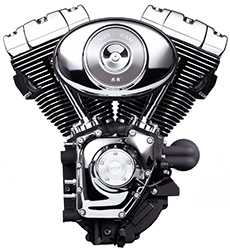

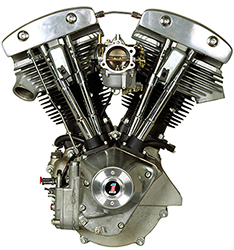
M8 Turbos
Twin Cam
Turbos
Evolution Turbos
Shovelhead
Turbos
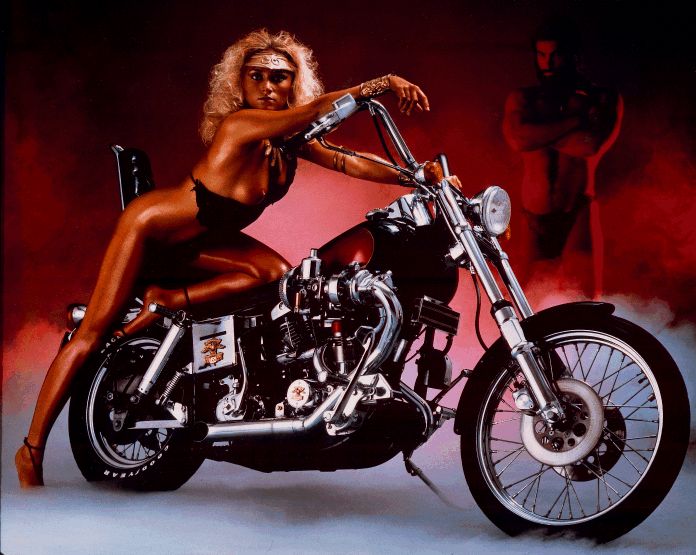
Models: Shelby Sawyer. Harley FXWG
The first successful turbo for the Harley big
twin was our design which featured an IHI Turbo, a
draw-through SU CV Carb, equal length primary tubes joining
into a 2-1 turbo header; a 2 1/2" turbo exit pipe with a 3"
diameter turn-out muffler.
The RB Racing kit featured an RB Racing billet
Boost Master wastegate, a chromed inlet plenum, and a
glycerin filled boost gauge. These kits produced 125 to 150hp
@15psi of boost.
No heat on your leg with exhaust routed forward
Some 25 years later Shelby got in contact with
us and we got her some prints of the photo shoot. She was at
the audition for the shoot with a friend and did the shoot
after another model sort of dared her to give it try. Pro
photographers Mark Rice and Ron Tuso did the shoot. Small
world. Shelby is doing fine these days, involved in religious
art.
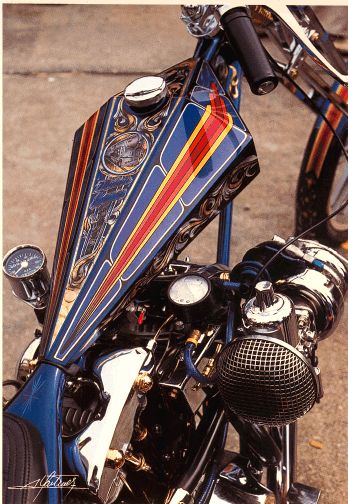
Some kits were produced with black
chrome headers
The black chrome pipes indicate
this was one of the first 33 units we produced. Draw through
SU Carb. BDK Needle 101.5 main jet, 2 1/2 turns out...can't
seem to forget that for some reason. Actually there are a lot
of reasons we can't forget that. These were the first
successful Harley-Davidson turbo kits. If you ran them up to
15 psi and worked on the engines they would produce up to
150hp...Of course you couldn't stop but that was another
story.
We even built, in his shop, a turbo for Dick
Evalesky of Atlas-Precision Frames (closed /retired) for a big
money grudge race that he won. Testing against a CB750 his
Chopper would thunder by after the CB750 got it out of the
hole.
Mechanical Boost Gauge
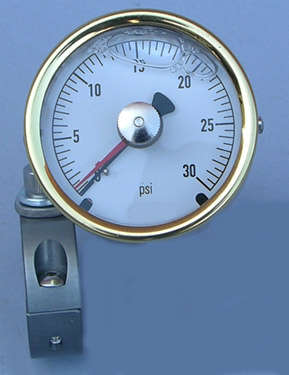
3 Bar Boost Gauge with
Tattle-Tale indicator showing maximum boost actually
run. Glycerin filled to resist vibration. Easy to
reset, even with gloved hand. Not lighted.
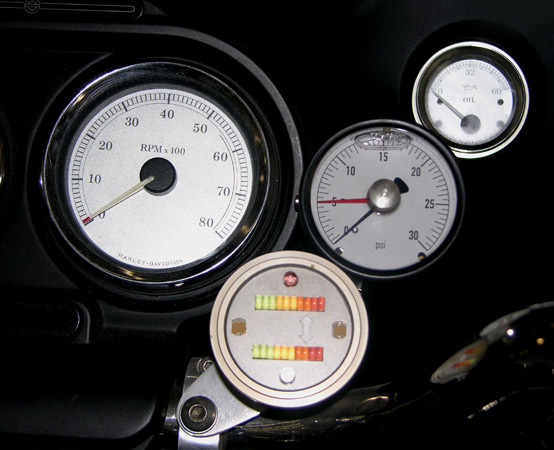
Part Number 03-1013: Center back mount w/12mm x 1.5 locknut and integral push-on hose nipple. On Harleys you can mount this gauge directly off of the back of our RSR Dual Air Fuel Ratio Gauge. Viewing the tach, the air fuel ratio, and the boost all in one location. Only O2 feedback is fast enough for real-time monitoring.
Boost Control
(Optional with External Wastegate)
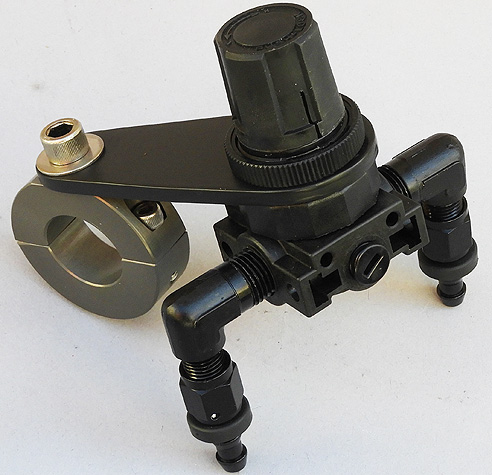
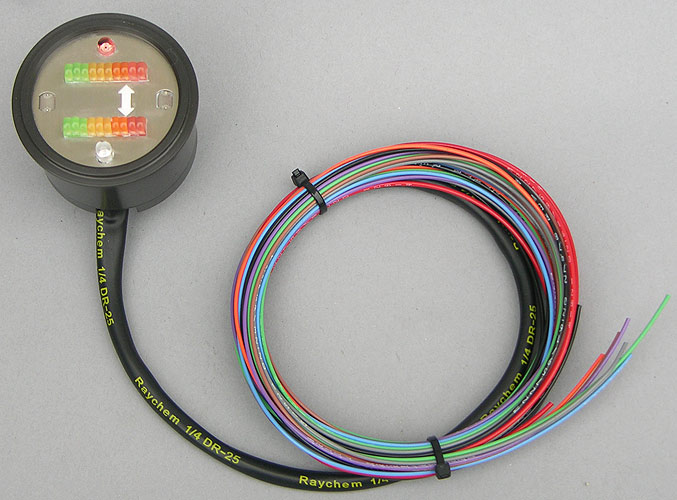
Black Knob controls the boost.
Clockwise increases the boost. Turn the boost all the way
off (full counter-clockwise) and it's about 6-7 PSI.
Just remember, leaving it set at 8 psi, you can outrun about
anything. When you're cruising at 75 mph and roll the
throttle on it will instantly produce boost pressure. Rider
adjustable when you are riding.
Turning dial up to 11 turns: 6-7
PSI (Wastegate Spring) to 25 PSI.
Dual RSR
Air Fuel Ratio Gauge is to the right. We have no idea
how anyone thinks they are going to get their tuning right
without actually riding and observing the Single or Dual O2
Display. The O2 Display is a mandatory purchase with the
kit.
Barely nudge the throttle and it goes to 0" Hg and anymore than that and it goes directly into boost. Hit a long steep grade at high speed and the turbo will hold at about 2 psi boost. It's not a good idea to beat your bike to death on a dyno if there is not enough airflow especially with a turbo. Best to ride.
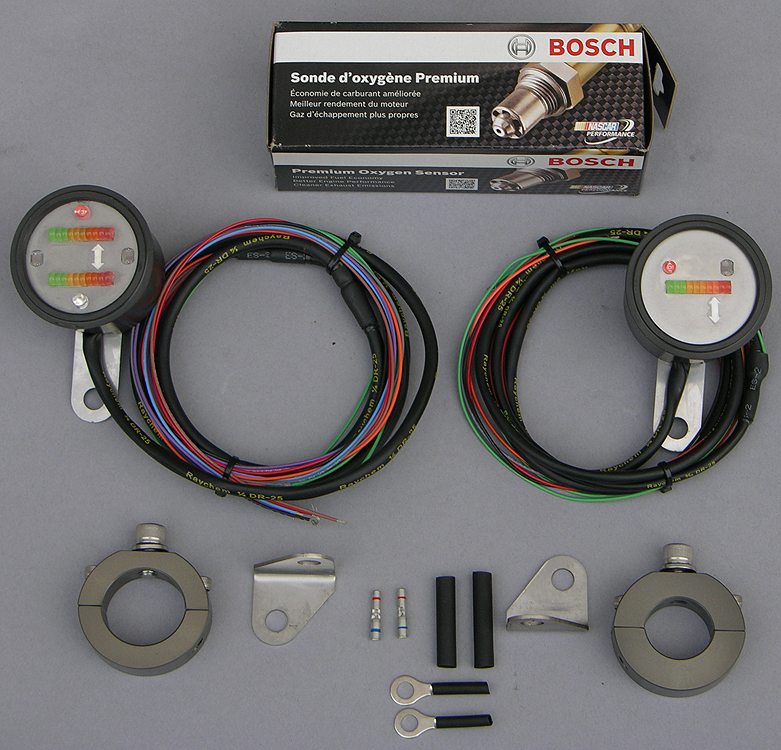
Single or Dual RSR Air Fuel Ratio
gauges. Which one depends on the system or rider preference.